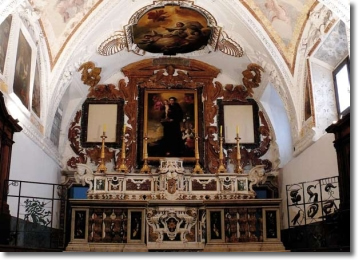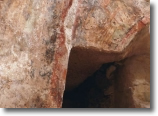
This holy bishop... on the principle of fifth century built under the rock of this hill his tomb... and his tomb became a source of miracles and the crypt was soon changed into a church and the Neapolitans, desiring to be buried with their pastor, formed there another cemetery, which said the catacomb of St. Severo.
The saint's body before the ninth century was solemnly carried into the church of St. Giorgio, so the cult of the ancient extramural crypt diminished, and the catacomb remained in use as cemetery together with the adjacent kiosk, until in 1573 Archbishop Mario Carafa gave way it to conventuals, they fabricated closely the monastery, and in 1681 remade the church with design of Dionisio Lazzaro.
Upon the altar there is a prestigious painting by an unknown artist that forging the style of the Zingaro [the picture today is attributed to Teodoro D'Errico], the painting depicts "la Vergine con i santi Severo, Ludovico, Antonio e Francesco D'Assisi". In the chapels there are pictures of some merit.


